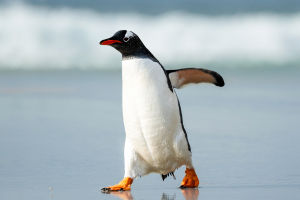Jellyfish: Ocean Mysteries
Hey Lykkers! Are you ready to dive into the mesmerizing world of jellyfish with us?
These fascinating creatures are not only captivating but also play a significant role in marine ecosystems, making them a topic worth exploring.
What Are Jellyfish?
Jellyfish, despite their name, are not actually fish. They belong to the phylum Cnidaria and are classified as invertebrates, meaning they lack a backbone. With their gelatinous bodies and tentacle-like appendages, they are often seen drifting gracefully in oceans around the world. There are over 200 species of jellyfish, ranging in size from the tiny Irukandji jellyfish, which can be as small as a pea, to the massive Lion's Mane jellyfish, whose tentacles can stretch over 100 feet!
The Anatomy of Jellyfish
Jellyfish are composed of three main parts: the bell, the tentacles, and the oral arms.
The Bell: This umbrella-shaped body helps them to move by contracting and relaxing, allowing them to pulsate through the water.
The Tentacles: Covered with specialized cells called nematocysts, jellyfish use these tentacles to capture prey and defend themselves. These stinging cells can deliver painful stings to unsuspecting swimmers.
The Oral Arms: These are used to transport food from the tentacles to the jellyfish's mouth, which is located underneath the bell.
Life Cycle of a Jellyfish
Jellyfish have a unique life cycle that consists of several stages:
Planula: The life cycle begins when the jellyfish releases eggs and sperm into the water, resulting in fertilization and the formation of a planula.
Polyp: The planula settles on the ocean floor and develops into a polyp, which resembles a small sea anemone.
Ephyra: After several months, the polyp undergoes transformation, budding off into a juvenile jellyfish known as an ephyra.
Adult Jellyfish: Finally, the ephyra matures into an adult jellyfish, completing the cycle.
Jellyfish in the Ecosystem
Jellyfish play a vital role in the marine food web. They are a food source for various marine animals, including sea turtles, fish, and even some birds. Additionally, jellyfish help to maintain the balance of marine ecosystems by regulating the population of their prey, which mainly consists of small fish and plankton.
However, the increasing presence of jellyfish in some regions is raising concerns. Overfishing, climate change, and pollution are leading to algal blooms, which can create an environment conducive to jellyfish proliferation. This phenomenon can disrupt local fisheries and impact the overall health of marine ecosystems.
Fascinating Facts About Jellyfish
Here are some intriguing facts that highlight the uniqueness of jellyfish:
Age-Old Creatures: Jellyfish have been around for over 500 million years, making them one of the oldest living creatures on Earth.
Bioluminescence: Some species of jellyfish can produce light through a process called bioluminescence, creating beautiful displays in the dark ocean waters.
Jellyfish Blooms: When conditions are right, jellyfish can reproduce en masse, resulting in large swarms known as blooms. These blooms can cause problems for fishing boats and swimmers alike.
Jellyfish are truly fascinating creatures that have captured the curiosity of marine enthusiasts and scientists alike. With their unique anatomy, intriguing life cycle, and significant role in the ocean ecosystem, they remind us of the wonders of nature. Next time we find ourselves by the ocean, let’s keep an eye out for these beautiful, ethereal beings and appreciate the delicate balance of life beneath the waves!


